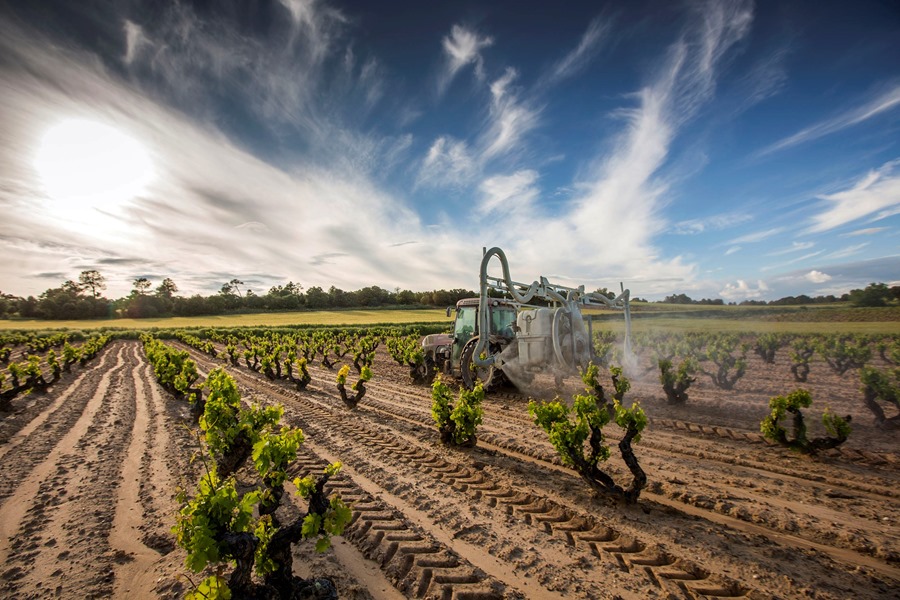Ruben Figueroa | Madrid/Valladolid (EFE).- Oak barrels, concrete jars and stainless steel tanks have relegated clay amphoras to winemaking, but this age-old method has returned backed by the purity of flavor it achieves, faithful to the characteristics of the grapes from which it comes. The wine from the jar returns.
The romantic idea of making wine in the traditional way and the desire to offer different references are also among the reasons why more and more wineries introduce clay jars into their processes, which had fallen into disuse due to their greater fragility and cleaning difficulty.

“In general, what we are seeing is that they are fruitier, fresher wines, which give a greater expression of the terroir,” Fernando Rodríguez de Rivera Cremades, general director of the Pradorey winery, from La Ribera, told Efe. of the Douro.
The amphora provides “more purity and sincerity to the wines thanks to the porosity of the material, which allows the constant entry of oxygen”, something that, in turn, “reinforces the texture of the wines, with greater smoothness and volume”, he explains to Efe Rosana Lisa, oenologist and head of R&D at the Ramón Bilbao winery in La Rioja.
Both are examples of large wineries that have recently ventured into making wine in jars: Ramón Bilbao since 2015, with new clay jars, bought in Italy, through which 20,000 liters of wine pass each year, although not for fermentation. but only to do the “tuning”.
The result is “high purity wines” thanks to the fact that the amphoras “help to transmit the identity of an origin”, Lisa points out.
And Pradorey since 2016, with the purchase of several old jars that he recovered to put them into use with the idea of giving more prominence to the terroir and the grapes and less to the oenological processes, and through which more than 100,000 liters of wine pass each year. in different processes, depending on which label it is going to be bottled for.
“What we are looking for is not so much a fashion, it is not so much an extravagance in the elaboration, but we understand that it is a elaboration philosophy that allows us to promote that differentiation of the vineyards,” says Fernández.
Native grape and wine in a jar, the perfect marriage
Other wineries were clear from the beginning, such as Más Que Vinos, from the Toledo town of Dos Barrios, launched in 1999 by three oenologists from the remains of an old winery in the town, more than one hundred and fifty years old.
There they found a set of clay jars that they immediately connected with their idea of making wine in a traditional way and with native grape varieties.

“We have always made wine in a jar, since we started 25 years ago. And we were clear that we wanted to work with autochthonous varieties and make wines with the usual tradition”, one of the partners of this winery, Margarita Madrigal, points out to Efeagro.
In the clay they find a material that, unlike the barrels, does not transmit aromas to the wine and respects the nature and qualities of the grapes, and in them they make some 30,000 bottles of three different references, which constitute their highest value labels.
Underground cellar of jars
A “treasure” was also found by the Celler del Roure winery, in Moixent (Valencia), when in 2007 the family that owned it bought a nearby farm that had about 100 underground clay jars whose origin is lost in time, its director tells Efeagro technician, Pablo Calatayud.
Faced with such heritage, they felt the “obligation” to make wine the old way and currently have 24 jars in operation in which they make, from start to finish, around 100,000 bottles, also using native grapes as raw material.
“It is clear that there are some old varieties that are very well aged in a jar”, points out Calatayud, who also considers that “a good thing about the jars is precisely the purity of the wines, since they do not add flavors or aromas as yes what happens with the barrels”.
Calatayud understands that the excessive use that has been made of wood homogenizes the wines even though they are from different areas and grape varieties, and finds that one of the reasons why many wineries are now returning clay jars is to find that differentiation that has been lost. EFE




